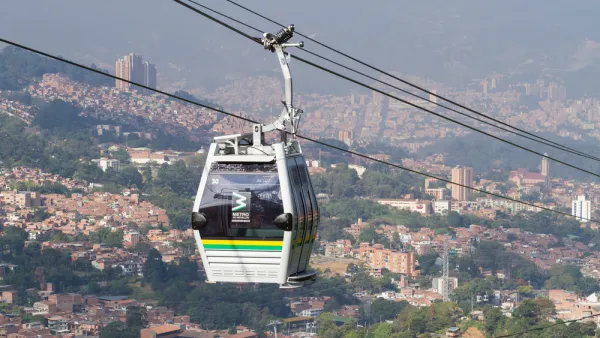Josh Stephens muses on the modern state of an erstwhile global capital that has kept its aesthetic charms, but lost its anima.
Once the beating heart of commerce, art, and culture across the globe, Venice will never lose the charm of its physical spaces. The basic density and walkability underlying the design of the city evoke images of bustling Renaissance street life. But with roughly three million tourists passing through each year – more than ten times the number of permanent residents – the experience of the city can feel a little artificial, laments Stephens (who estimates a tourism figure almost six times higher).
"What's strange about Venice is that it is still, technically, a city, with residents, an economy and a government," he writes. "And yet, perhaps nowhere else in the world does the relationship past and present fall so surreally, credulously out of balance."
While some have likened Venice to a museum, Stephens prefers the image of an amusement park. Perhaps more relevantly, he argues that recognizing the beauty and the strengths of our own existing spaces is the key to having them serve us as well as Venice once served its own people.
"You can still visit a million live cities and still believe that their best days are ahead of them. And you can believe that you can be a part of them. That goes as much for historical giants like Paris and London as it does for upstarts like Dubai and Bangalore. For all of the challenges in the U.S., it applies to nearly every American city."
FULL STORY: City, Museum or Amusement Park? The Problem With Venice

National Parks Layoffs Will Cause Communities to Lose Billions
Thousands of essential park workers were laid off this week, just before the busy spring break season.

Retro-silient?: America’s First “Eco-burb,” The Woodlands Turns 50
A master-planned community north of Houston offers lessons on green infrastructure and resilient design, but falls short of its founder’s lofty affordability and walkability goals.

Delivering for America Plan Will Downgrade Mail Service in at Least 49.5 Percent of Zip Codes
Republican and Democrat lawmakers criticize the plan for its disproportionate negative impact on rural communities.

Test News Post 1
This is a summary

Test News Headline 46
Test for the image on the front page.

Balancing Bombs and Butterflies: How the National Guard Protects a Rare Species
The National Guard at Fort Indiantown Gap uses GIS technology and land management strategies to balance military training with conservation efforts, ensuring the survival of the rare eastern regal fritillary butterfly.
Urban Design for Planners 1: Software Tools
This six-course series explores essential urban design concepts using open source software and equips planners with the tools they need to participate fully in the urban design process.
Planning for Universal Design
Learn the tools for implementing Universal Design in planning regulations.
EMC Planning Group, Inc.
Planetizen
Planetizen
Mpact (formerly Rail~Volution)
Great Falls Development Authority, Inc.
HUDs Office of Policy Development and Research
NYU Wagner Graduate School of Public Service



























